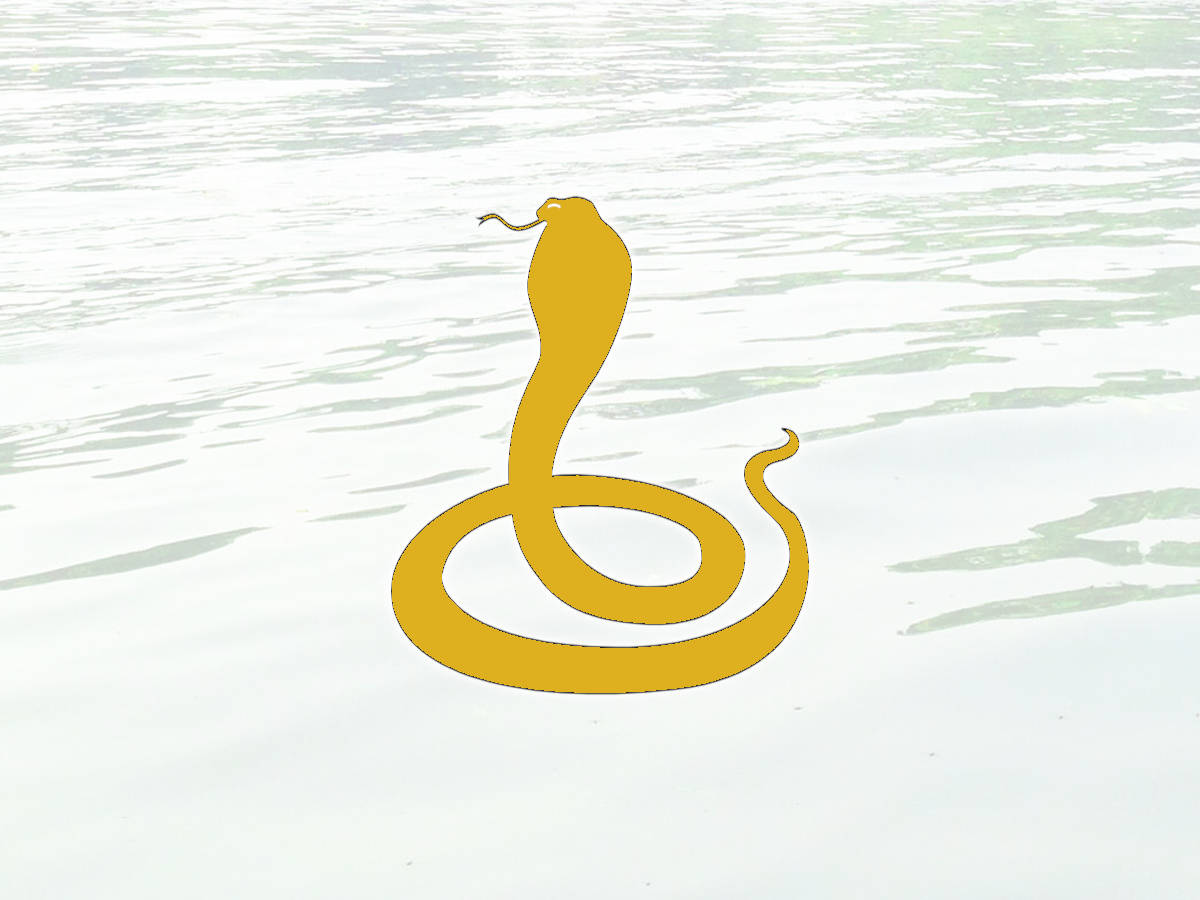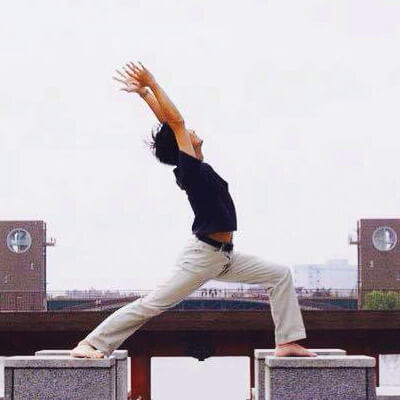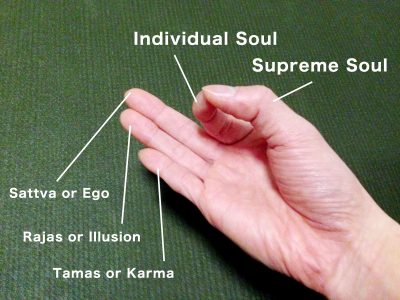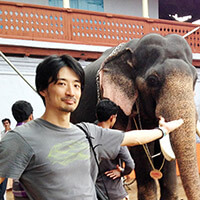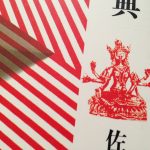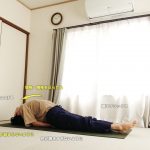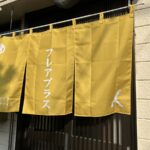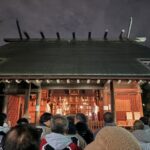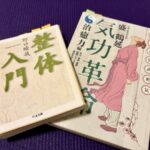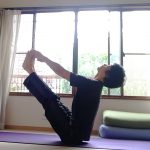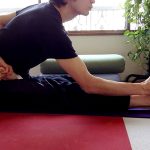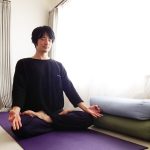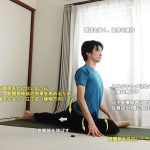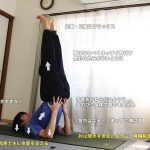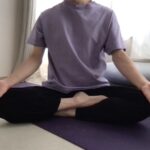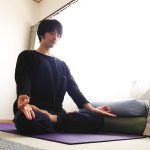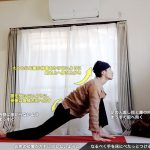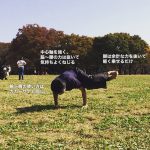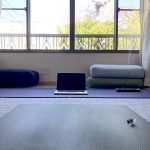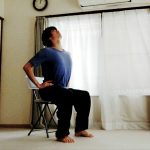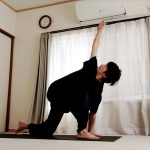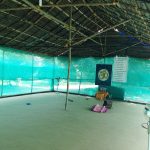「クンダリニー・タントラ/スワミ・サティヤナンダ・サラスワティ著」を読み進めていく形で、クンダリーニヨガ(クンダリニーヨーガ)の概要を紹介していく連載記事です。
「Kundalini Tantra 英語版 ペーパーバック」 Swami Satyananda Saraswati (著)
「Kundalini Tantra 英語版 Kindle」 Swami Satyananda Saraswati (著)
今回は、第3章の11節、各チャクラを覚醒し、その働きを統合する行法に関する部分です。
以下、引用部分の太字強調は私が個人的に重要と思ったところを示したものです。
この記事の目次
各チャクラの覚醒と統合の流れ
So far we have given a series of practices for each of the individual chakras. In this chapter we will describe practices which are concerned with overall awakening of the chakras. Of course, the awakening of one chakra cannot take place in isolation; it must have repercussions on all the chakras to a greater or lesser extent. In this respect it can be said that the techniques for specific chakras will also influence all the chakras, but the following techniques systematically help to activate all the chakras together and bring balance into the whole mind-body-chakra axis.
ここまで、個別のチャクラに関する行法が示されてきましたが、この項では全体のチャクラの覚醒に関わる行法が示されます。
チャクラは個別に覚醒するのではなく、多かれ少なかれ他のチャクラと影響を与え合っています。つまり、個別のチャクラにそれぞれ関係するものとして示されてきたこれまでの行法も、全てのチャクラに影響を与えているということになります。
そしてこの節で示される行法は、体系的に全てのチャクラを活性化し、心・体・チャクラを通じる軸にバランスをもたらすものであるといいます。
Practise
You will not have time to do all the practices given in this chapter. Therefore we suggest that you practise the following for one month: Chakra meditation, chaturtha pranayama, chakra yoga nidra, unmani mudra and bija mantra sanchalana daily.
全ての行法を行う時間がないようであれば、以下の行法を毎日1ヶ月間行うと良い、と指示されています。
- チャクラ瞑想
- チャトルタ・プラーナーヤーマ
- チャクラヨーガニドラー
- ウンマニームドラー
- ビージャマントラ
Musical chakra meditation and drawing the chakras, can be done if you have the time and the inclination. They can be omitted without any detriment to arousing kundalini.
音楽を使ったチャクラ瞑想と、チャクラのイメージを描く行は、時間があってやりたいと思えるなら行えば良いと指示されています。これらを日々の実践から除いても、クンダリニー上昇を妨げることはないといいます。
Practices for each individual chakra can be done as follows:
ajna – shambhavi mudra
mooladhara – moola bandha and nasikagra mudra
swadhisthana – vajroli (or sahajoli)
manipura – uddiyana bandha
anahata – ajapa japa
vishuddhi – jalandhara bandha and vipareeta karani asana
bindu – yoni mudra.
引き続き、いままでのチャクラ行法の中から、以下のものを選んで続けるべしと指示されています。前項までの同様な指示と比べると、さらに数が絞られているようです。これらは各チャクラ行法の中でも最重要なものということになるのでしょう。
- アージュニャーチャクラ:シャーンバヴィームドラー
- ムーラーダーラチャクラ:ムーラバンダ、ナシカグラムドラー
- スワディシュターナチャクラ:ヴァジローリームドラー(男性)、サハジョーリームドラー(女性)
- マニプーラチャクラ:ウディヤナバンダ
- アナーハタチャクラ:アジャパ・ジャパ
- ヴィシュッディチャクラ:ジャーランダラバンダ、ヴィパリータカラニーアーサナ
- ビンドゥ・ヴィサルガ:ヨーニムドラー
Then after one month you can start to learn kriya yoga, having first of all taken the advice of an experienced yoga teacher, or by writing to Bihar School of Yoga, Munger, Bihar, India.
ここで示される行法を1ヶ月行った後、クリヤーヨーガを学び始めます。経験豊富なヨガ教師からアドバイスを受けるか、ビハル・スクール・オブ・ヨーガ(サティヤナンダ氏が創立したスクール)に手紙を書いて、学びを進めていくと良いと指示されています。
行法1:チャクラ瞑想
Make yourself comfortable in a meditative asana, preferably siddhasana or siddha yoni asana. Place both hands on the knees in chin mudra ( palms facing upward, thumbs and forefingers together). Close your eyes and make the body steady throughout. The spinal column should be absolutely upright and straight, with the back and shoulders fully relaxed. The head should be poised comfortably on top of the spinal column. The whole body is completely relaxed and immobile. It is motionless like a statue. Maintain absolute awareness of the physical body for several minutes. Become aware of the spinal column. Now bring your awareness to ajna chakra.
快適で瞑想に適した坐法で坐ります。シッダーサナ(男性)またはシッダヨーニアーサナ(女性)が最適です。
両手を膝の上に置き、手のひらを上に向けて、親指と人差し指を結んでチンムドラーをつくります。
目を閉じて、安定した姿勢で坐ります。背骨をまっすぐ垂直に立てますが、背筋や肩は完全にリラックスした状態にします。
頭は背骨の上に快適に乗り、体全体はリラックスして、石像のように不動に保ちます。
数分間、肉体に意識を置き、背骨への気づきを磨きます。
その後、アージュニャーチャクラへ意識を向け始めます。
ここから順番にチャクラへの集中を行っていきますが、これらの行法は各チャクラの覚醒方法として説明されたものをベースにしている部分も多いので、詳細を知りたい場合は各チャクラの行法の記事を確認してみると良いかと思います。
アージュニャーチャクラへの集中
Ajna chakra is located inside the brain at a point directly behind the eyebrow center and on top of the spinal column, where the pineal gland is situated. Try to discover a pulsation within this ajna chakra region. Be absolutely aware of this pulsation.
アージュニャーチャクラは脳の内部にあり、眉間のちょうど真後ろ、背骨の一番上のあたりに位置していて、松果体がある位置にあります。
その位置から発せられる脈動を感じ取ることに、全ての気づきを向けます。
この一連の実践の中では、チャクラの「pulsation 脈動」を感じ取るべし、という指示がよく出てきます。もし脈動が感じ取れない場合は、そこに示された各行法を行っているうちに、自然にチャクラの位置も感じ取れるようになり脈動も感じられるようになるであろう、という流れになっています。
また、「isolate」という語がよく使われます。直訳すれば「隔離する」といった意味ですが、骨盤底や背骨の中といった把握しにくい領域の中で、正確にチャクラの位置を「識別する」べしといったニュアンスが感じられます。
Now synchronize the mantra Оm with the pulsation in the ajna chakra region. Оm, Оm, Оm, Оm, Оm, should be the form of your awareness with the pulsation of ajna chakra. Count the pulsation 21 times.
Omのマントラを、その脈動にシンクロさせるように、21回唱えます。
このことから、その脈動はそんなに速いものではないというイメージが読み取れます。不思議なもので、私の感覚では、この脈動は心臓の脈動とも異なり、呼吸のテンポとも異なり、いろいろな波に惑わされずに悠然と流れているように感じられます。
Now begin to practise ashwini mudra. Do not be concerned with ajna chakra, only practise ashwini mudra – contraction and relaxation of the anus. It should be practised at a medium speed – neither too quickly nor too slowly. After practising like this for a few sessions, you should be able to feel the center of ajna automatically while performing ashwini. When that happens you can begin to concentrate directly on ajna. Until then, go on with ashwini mudra for about 4 minutes.
その後、アシュウィニムドラーを行います。アージュニャーチャクラへは意識を向けず、肛門の収縮と弛緩だけを行います。
スピードは中程度、遅すぎず速すぎないようにしばらく行います。このアシュウィニムドラーを続けていると、”自然に”アージュニャーチャクラの中心位置を感じることができるようになるといいます。
それを感じられるようになったら、アージュニャーチャクラへ直接集中するようにします。それまでは、アシュウィニムドラーを4分間ほど続けるようにします。
ムーラーダーラチャクラへの集中
Now bring your awareness to the perineal region and the psychic center of mooladhara chakra. Discover the precise psychic point of mooladhara chakra. Now try to discover a subtle pulsation there. Localize the pulsation very precisely in the mooladhara region and count 21 pulsations.
次に、ムーラーダーラチャクラのある会陰周辺へと意識を向けます。
ムーラーダーラチャクラの位置する霊的な中枢の位置を、正確に把握することを目指します。そのエリアから発せられる微細な脈動を正確に感じとるようにし、その脈動を21回数えます。
Now open your eyes and adopt nasikagra drishti; gazing at the nosetip. Do not be concerned with mooladhara chakra, but only with nosetip awareness. The simultaneous awareness of mooladhara chakra will come after some time. Continue this practice for 3 minutes.
目を開けて、鼻先を凝視するナシカグラドリシュティを行います。ムーラーダーラチャクラには意識を向けず、鼻先だけにしばらく気づきを向けていると、”自然に”ムーラーダーラチャクラの位置への気づきが訪れるといいます。これを3分間ほど続けます。
スワディシュターナチャクラへの集中
Now bring your awareness to swadhisthana chakra in the region of the tail bone. Discover the psychic point of swadhisthana chakra. Try to discover the pulsation in this center. Count this pulsation 21 times.
次に、尾骨にあるスワディシュターナチャクラに意識を向けます。これも同様に、正確な位置から発せられる脈動を感じ取るようにし、脈動を21回数えます。
Now perform vajroli mudra – the drawing up and releasing of the genital and urinary systems. Continue vajroii mudra for 4 minutes.
性器を引き上げるように泌尿器系周辺の筋肉(小便を途中で止める筋肉)を収縮・弛緩する、ヴァジローリームドラーを行います。4分間ほど続けます。
マニプーラチャクラへの集中
Then bring your awareness to the region of the navel. Become aware of the psychic breath from mooladhara to the navel, and from the throat to the navel. Both these breaths must reach the navel at the point of full inhalation. When the two forces meet and coincide in the navel, retain the breath there, and develop the mental awareness of the single central point offeree in the navel. Then release the breath and continue this practice in your own natural rhythm. Continue for 4 minutes.
次に、臍のエリアへ意識を向けます。霊的な息の流れが、ムーラーダーラチャクラから臍へ(プラーナの流れ)、そして喉から臍へ向かって(アパーナの流れ)いるのを感じ、息を吸いきったときに2つの流れが臍に到達するイメージをします。
そこで息を止めて、2つの流れが合一する臍の中の一点に意識を向けます。
息が続かなくなったら息を吐いて、自然に行えるテンポでこれを4分間ほど続けます。
Now take your awareness directly back to manipura chakra, within the spinal column, directly behind the navel. Try to isolate that point and the pulsation there. Count the pulse 21 times in manipura chakra.
そして臍の真後ろの背骨の中にあるマニプーラチャクラへ直接意識を向けます。そこから発せられる脈動を感じとり、その脈動を21回数えます。
アナーハタチャクラへの集中
Now bring your awareness to the region of anahata chakra in the spinal column, at the level of the center of the chest. Isolate that point and try to discover a pulsation within it. Count the pulsation 21 times. Now bring your awareness to the space of the heart. First become aware of the ingoing breath in the throat. With the ingoing breath, feel the vast heart space filling up. Feel the heart space directly – contracting and expanding with the rhythm of the spontaneous, natural breath. Be aware of the vision which will come in the vast heart space. Allow it to come by itself. Continue for 2 minutes.
次に、胸の真ん中から真後ろの背骨の中にある、アナーハタチャクラの領域へ意識を向けます。
そこから発せられる脈動を感じ取るようにし、脈動を21回数えます。
その後、ハートの空間へ意識を向けます(以下の流れは、ここではざっくり説明されていますが、アナーハタチャクラに関する行法に出てきました)。
喉を通って入ってくる息に意識を向け、広大な空間が満たされていくイメージをします。その空間だけに意識を向け(喉への意識は止めて)、自然で自発的な呼吸のリズムで、その空間が膨らんだり収縮したりするのを感じます。
広大なハートの空間に生じるビジョンに気づきを向け、自分で視覚化やイメージしようとせず自然に湧き上がってくるのに任せて、2分間ほど続けます。
ヴィシュッディチャクラへの集中
Now bring your awareness to the throat pit and then take it directly back to vishuddhi chakra in the spinal column.Repeat mentally, ‘vishuddhi, vishuddhi, vishuddhi’.Try to discover the pulsation within vishuddhi and witness it for 21 pulsations.
次に、喉のくぼみへと意識を向け、そこから真後ろの背骨の中にあるヴィシュッディチャクラへと意識を移します。
頭の中で「ヴィシュッディ、ヴィシュッディ、ヴィシュッディ」と唱えます。ヴィシュッディチャクラから発せられる脈動を眺め、21回数えます。
各チャクラとスシュムナーへの集中
Now as the name of each chakra is given, move your awareness within sushumna passage so as to touch the chakra with a small imaginary flower. This is all that you have to feel, but your awareness of each chakra must be very precise – mooladhara, swadhisthana, manipura, anahata, vishuddhi, ajna; ajna, vishuddhi, anahata, manipura, swadhisthana, mooladhara. Guide the consciousness through the chakras in sushumna, ascending and descending 4 more times. Now chant Оm 3 times.
各チャクラの名前を認識したら、それらを表す小さな蓮華のイメージに触れるために、スシュムナーを通して意識を動かします。各チャクラへの意識は正確に持ち続けながら、ただスシュムナーの道筋の中を動く意識を感じ続けます。
下から上へ、ムーラーダーラチャクラ→スワディシュターナチャクラ→マニプーラチャクラ→アナーハタチャクラ→ヴィシュッディチャクラ→アージュニャーチャクラ、そして上から下へアージュニャーチャクラ→ヴィシュッディチャクラ→アナーハタチャクラ→マニプーラチャクラ→スワディシュターナチャクラ→ムーラーダーラチャクラと、チャクラを感じながらスシュムナーをたどっていき、これを4往復ほど繰り返します。
そして、Omを3回唱えて終わります。
行法2:音楽を使ったチャクラ瞑想
Sound is a particularly effective and enjoyable means of developing awareness of the chakras. This is why nada yoga is so powerful in spiritual awakening.
音を使った行法は、チャクラの覚醒にとても効果的で、かつ楽しめるものです。そのため、音を使うナーダヨーガは霊的覚醒のために非常に有効な道のひとつとされています。
ここで使うのは、ナーダ音のような微細な音ではなく、一般的にも親しまれた1オクターブをつくる7つのドレミファソラシの音です。これらの音が、各チャクラに関係しているといわれます。
The 7 notes of the musical scale correspond to the vibration of the 7 chakras from mooladhara to sahasrara, and this is the basis for a very effective musical meditation technique. The best instrument of all is the human voice, which can be supplemented by the harmonium. However, other instruments can also be used.
Latin scale Chakra Sanskrit scale Do mooladhara Sa Re swadhisthana Re Mi manipura Ga Fa anahata Ma So vishuddhi Pa La ajna Dha Ti bindu Ni Do sahasrara Sa
- ド:ムーラーダーラチャクラ
- レ:スワディシュターナチャクラ
- ミ:マニプーラチャクラ
- ファ:アナーハタチャクラ
- ソ:ヴィシュッディチャクラ
- ラ:アナーハタチャクラ
- シ:ビンドゥ・ヴィサルガ
- ド:サハスラーラ
以上のような関係性で、各音階とチャクラが対応づけられています。音を出すためには「人の声」がもっとも有効で、ハーモニウムや他の楽器を用いることもできると説明されています。「ハーモニウム(ハルモニウム)」はインドの鍵盤楽器で、メロディをつけてマントラを唱えるキールタンなどでよく用いられます。
音楽を使ったチャクラ瞑想 第1段階
Stage 1
At first the musical scale of the harmonium is ascended very slowly while the awareness begins in mooladhara and ascends sushumna from one chakra to the next, feeling, each note vibrating in the spinal column in the region of its corresponding chakra. When sahasrara is attained, descend the awareness with the musical scale down through sushumna to mooladhara. The consciousness ascends and descends sushumna with the scale many times, slowly speeding up as chakra location becomes quick and effortless.
最初は、ハーモニウムなどでド→レ→ミ→ファ→ソ→ラ→シ→ドの音階をゆっくり鳴らしていきます。音階が上がっていくにつれて、ムーラーダーラチャクラからスシュムナーを通って次のチャクラへと意識を上げていき、それぞれの音が、それぞれのチャクラのエリアにある背骨の椎骨の中で振動しているのをイメージします。
サハスラーラ(高いド)まで至ったら、音階を下げていき、同様にスシュムナーを通ってムーラーダーラチャクラまで意識を下げていきます。
この往復を繰り返しながら、少しずつスピードを上げていき、各チャクラの位置を意識するのも速く容易にできるようにしていきます。
音楽を使ったチャクラ瞑想 第2段階
Stage 2
Now the voice is integrated with the notes. The names of the chakras are chanted very precisely. The names themselves are mantras, and if intoned with the correct note and pronunciation, each center can be set vibrating, and the sushumna passage and the whole body begin to vibrate with energy. This practice is very powerful. It can be continued for 10 minutes or more.
次に、先ほどと同じようにムーラーダーラ(低いド)から上がって下がっていく順番で各チャクラとスシュムナーを意識しながら、音に声をのせていきます。各チャクラの名前を正確に唱えます。それらの名前そのものがマントラであり、正しい音階と発音で唱えることによって、各チャクラは振動し、そしてスシュムナーの道筋と体全体がエネルギーに溢れて振動し始めます。
これはとても強力な行法であり、10分間以上続けて行います。
音楽を使ったチャクラ瞑想 第3段階
Stage 3
In this stage the awareness still ascends and descends through sushumna with the musical scale, but the voice makes a continuous a-a-a-a-a-a sound (as in calm) as it ascends and descends through the chakras. In the final stage the full power of the voice is released and a tremendous energy is generated, provided the pitch is maintained accurately.
上がって下がっていく音階と意識は先ほどまでと同様で、今度はチャクラ名ではなく「アー」という落ち着いた音を唱えます。
音階が正確に維持されていれば、声の持つ全ての力が解き放たれ、膨大なエネルギーが生まれるであろう、と説明されています。
行法3:チャトルタ・プラーナーヤーマ
Here is a practice that combines breathing, mantra and chakra awareness. Although it is not widely taught, it is a powerful technique that is both a pranayama and a meditation. Chaturtha pranayama means, ‘pranayama of the fourth state’, or a transcendental state where words and definitions fail to reach. This practice will lead to deeper awareness and knowledge of the chakras. It is also a preparatory technique for kriya yoga as it develops sensitivity to both the psychic spinal passage and the chakras.
チャトルタ(チャトゥルタ)・プラーナーヤーマは、呼吸法の名前としては聞き慣れない名前ですが、ヨーガスートラなどに出てくる「第四のプラーナーヤーマ」の意味です。
参考:ヨーガスートラ解説 2.49-2.53 〜プラーナーヤーマ(調気・呼吸法)〜
ヨーガスートラでも説明されていたように、言葉による説明や定義を超えた状態であり、深い瞑想状態に至ることによって自然に息が落ち着いていって止まったような状態になります。
この行法は、チャクラへの深い気づきと知識を導くといい、そしてクリヤーヨーガの準備のための行法でもあ、スシュムナーとチャクラへの感覚を養うものであるといいます。
Technique
Sit in any comfortable meditative posture. Hold the spine erect and close the eyes. Breathe deeply. Let the breath become deeper and more subtle. Fix your awareness on the rhythmical flow of the breath. Continue for a number of rounds. Mentally synchronize the mantra Оm with the breath. The sound “O” should arise with inhalation. The sound ‘m-m-m-m-m’ should arise with exhalation. This sound should only be mental. Breathe through the nose, keeping the mouth closed. Continue in this manner with awareness of the flow of breath and the mantra. Now fix your attention at the eyebrow center. Feel that you are breathing in through that center with the mental sound “O”. Feel you are breathing out through that center, mentally chanting ‘m-m-m-m-m’. Continue with awareness of the breath, mantra and psychic center.
瞑想に適した快適な坐法で座り、背骨を立てて、目を閉じ、深く息を吸います。呼吸をより深く、微細にしていきます。呼吸のリズムに気づきを向け、数回深く呼吸します。
呼吸にあわせて、頭の中でOmを唱えます。その唱え方は、吸う息でO〜が生じ、吐く息でm〜が生じるようにします。
そして、眉間に意識を移し、眉間から呼吸を行っているように、眉間に息を吸いこむときにO〜、眉間から息が出ていくときにm〜の音が響くように頭の中でイメージします。
呼吸の流れとOmのマントラ、そして眉間のセンターに、意識を向け続けます。
Focus your attention on mooladhara. With inhalation and the sound “O-o-o-o-o”, feel the breath passing up through the spine, piercing all the chakras – mooladhara, swadhisthana, manipura, anahata, vishuddhi, ajna, sahasrara.
With exhalation and the sound “m-m-m-m-m”, feel the breath and sound moving down the spine, piercing all the chakras – sahasrara, ajna, vishuddhi, anahata, manipura, swadhisthana, mooladhara.
ムーラーダーラチャクラへ意識を向けます。
吸う息とともにO〜の音を頭の中で唱えながら、息がムーラーダーラチャクラから背骨を上がっていき、ムーラーダーラ・スワディシュターナ・マニプーラ・アナーハタ・ヴィシュッディ・アージュニャー・サハスラーラを突き抜けていくイメージをします。
吐く息でm〜の音を頭の中で唱えながら、今度は逆の順番で各チャクラを突き抜けながら息が下がっていき、ムーラーダーラチャクラへ至るイメージをします。
Continue for a number of rounds. Again fix your attention at the eyebrow center. Continue the mental repetition of Оm synchronized with the breath, but do not be aware of the breath. Only be aware of the mantra and the psychic center. Feel the “O” and the “m-m-m-m-m” sound. Continue in this manner for as long as possible.
数回繰り返した後、再び意識を眉間に移します。
呼吸に合わせて頭の中でOmを唱えるのを繰り返しつつ、呼吸には意識を向けないようにし、Omのマントラとチャクラにだけ意識を向けるようにします。
O〜とm〜の音を感じながら、できるだけ長くこれを続けます。
行法4:チャクラヨーガニドラー
ヨーガニドラー(ヨガニドラー)は、最近のヨガでも「眠りのヨガ」としてリラックスのためによく用いられていて、一般的なやり方としては、仰向けなどに寝た状態で音声ガイドなどを聞きながら心身を徐々にリラックスさせていくものがあります。
あまり有名ではないかもしれませんが、サティヤナンダ氏はヨガニドラーのやり方のひとつを確立した人物で、ヨガニドラーを詳しく解説した書籍も出版されています。ここでは、その技法をクンダリニーヨーガにも取り入れているようです。
「Yoga Nidra」 英語版 Swami Satyananda Saraswati (著)
Yoga nidra can be used very effectively to develop your awareness of the chakras. Here is an example of a yoga nidra/relaxation session which includes visualization and rotation of awareness through the psychic centers. Teachers can adopt this practice directly for their classes. For personal use, someone can lead you through the practice, or you can put the instructions onto a tape.
ヨガニドラーは、チャクラへの気づきを磨くために非常に有効であるといいます。ここではヨガニドラーあるいはリラクゼーションセッションの一例として、霊的中枢の視覚化や気づきを次々に向けていく実践のやり方を紹介しています。
ヨーガ教師はこのやり方を自分のクラスに組み入れても良いし、個人的に練習する場合は誰かにこれを読んでもらうか、自分で読んだ音声を録音して使うのも良いであろう、と指示されています。
ヨガニドラー 第1段階:準備
Stage 1: Preparation
Place a folded blanket on the floor and lie on it in shavasana. Loosen your clothing so you feel perfectly comfortable. If necessary, cover yourself with a blanket to keep warm, or put a sheet over you to keep insects away. The mouth and eyes should remain closed throughout the practice. Make sure that the spinal column is straight, in line with the head and neck, and that the hips and shoulders are fully relaxed. Keep the feet and legs slightly apart. The arms should be beside your body but not touching, and the palms should be facing up. Adjust your position so that you feel perfectly comfortable. Tell yourself firmly that you will not move your body throughout the practice.
毛布を敷いて、シャヴァーサナで仰向けになります。着ているものはゆるめて、完全に快適な状態をつくります。必要であれば毛布を上からかけて温かくしたり、虫がよってこないようにシートをかぶるなどします(日本の室内では必要ないでしょうけども)。
目と口は閉じておきます。
背骨はまっすぐになっていて、頭と首も正しく並んでいるようにします。お尻と肩も完全にリラックスしています。
両足は少し離します。両腕は体の横に、体には触れないように置いておきます。手のひらは上を向けておきます。
完全にリラックスできるように、姿勢を調整します。ヨガニドラーを行っている間中は、体を動かさないようにします。
ヨガニドラー 第2段階:沈む身体
Stage 2: Sinking of the body
Look at the space in front of your closed eyes. Imagine that the space surrounds your whole body. Your body is immersed in that space. Simultaneously be aware of your body. It feels very light, as light as a leaf falling from a tree. Imagine that your body is slowly sinking into the space that you see in front of your closed eyes, like a falling leaf. Your body is slowly sinking into the infinite space. Be aware of this feeling. Continue in this manner for a few minutes.
閉じた目の、前に広がっている暗い空間を見つめるイメージをします。
その空間は、全身を包んでいます。体はその空間の中に沈んでいます。
体は軽く、木から落ちる葉のように軽いようなイメージをします。
体はゆっくりと、その閉じた目の前に見える空間に、落ち葉のように沈んでいきます。
体はゆっくりと、無限の空間に沈んでいきます。
その沈んでいく感覚に、気づきを向けます。
これを数分間続けます。
ヨガニドラー 第3段階:呼吸のリズムを感じる
Stage 3: Rhythmical breath awareness
Become aware of your breathing. Awareness of the rise and fall of the navel with each breath. As you breathe in, imagine that you are sucking in air through the navel. As you breathe out, imagine that you are pushing air out from the navel. It is a rhythmical process. Do not alter the natural breath in any way, just become aware of it.
呼吸に意識を向けます。
呼吸とともに、臍が上下するのを感じます。
吸う息のときは、臍から息を吸うようなイメージをします。
吐く息のときは、臍から息を押し出すようなイメージをします。
自然なリズムで、呼吸は続きます。呼吸は、意識して変える必要はありません。ただ自然な呼吸に、気づきを向けます。
ヨガニドラー 第4段階:サンカルパ
Stage 4: Sankalpa
Repeat your sankalpa in a short positive sentence. It should be the crystallization of your spiritual aspiration and you should not change it. Repeat it with feeling, from the heart, not the lips. Repeat your sankalpa at least 3 times.
短いポジティブなフレーズで、サンカルパ(このようになりたいという意志や願い)を唱えます。
それは霊的な意志が結晶したものであり、変えるべきではありません。
心を込めて、唇からではなくハートから発するように、繰り返します。
そのサンカルパを、少なくとも3回繰り返します。
ヨガニドラー 第5段階:視覚化・身体の観察
Stage 5: Visualization – body awareness
Now try to visualize your own body. Imagine that you are viewing it from outside. Feel that your perception is outside and your body is an object of study. You may find visualization difficult – do not worry, just do your best. If you wish, you can imagine that there is a large mirror suspended over your body and that your body is reflected in it. Look at your own reflection. See your whole body: feet, knees, thighs, abdomen, chest, both hands, arms, shoulders, neck, head, mouth, nose, ears, eyes, eyebrow center, your whole face and your whole body. Combine your rotation of awareness with visualization of that part. Continue in this manner for a few minutes.
目を閉じたまま、自分の体を視覚化してみます。
体を外側から眺めているように、イメージします。
知覚が外側から働いているようにイメージし、身体は観察の対象になります。
視覚化が難しいと思う場合も、心配せず、できるかぎりやろうとしてみます。
たとえば、大きなミラーが自分の前に浮いていて、そこに身体が映っているというイメージをしてみるのも良いでしょう。
鏡に反射して見える、自分の全身をみつめます。
足、膝、太もも、お腹、胸、両手、腕、肩、首、頭、口、鼻、耳、目、眉間、顔全体、体全体…
それぞれの部分へ順番に気づきを向けながら、同時にその部分を視覚化してみます。
これを数分間続けます。
ヨガニドラー 第6段階:チャクラへの気づき
Stage 6: Psychic centers – rotation of awareness
Now you have to discover the location of the chakras. You have to develop awareness of each psychic center in the body. Start from the base of the spine and move your awareness upward. First become aware of mooladhara. In the male body it is situated in the perineum, between the anus and genitals, and in the female body it is located at the cervix – the mouth of the womb. Try to feel the sensation at mooladhara. It is a very specific point which you are trying to isolate. When you have found it, repeat mentally, ‘mooladhara, mooladhara, mooladhara’.
次に、チャクラの位置を感じ始めます。体の中にある、霊的中枢への気づきを高めます。
背骨の一番下から始めていきます。まずムーラーダーラチャクラ。男性は会陰の内部にあり、肛門と性器の間にあります。女性は子宮口にあります。
ムーラーダーラチャクラの感覚を、感じ取ろうとしていきます。そこは、しっかり認識する必要のある、特別なポイントです。
その位置を感じ取ったら、頭の中で「ムーラーダーラ、ムーラーダーラ、ムーラーダーラ」と唱えます。
Now move on to the second chakra, swadhisthana. It is located at the base of the spine, in the coccyx. Be aware of the sensation at that point and repeat mentally, ‘swadhisthana, swadhisthana, swadhisthana’.
次に、第2チャクラであるスワディシュターナに向かいます。それは背骨の一番下、尾骨にあります。その位置に気づきを向け、頭の中で「スワディシュターナ、スワディシュターナ、スワディシュターナ」と唱えます。
The third chakra is manipura. It is located in the spine in line with the navel. Feel this point and mentally repeat, ‘manipura, manipura, manipura’.
第3チャクラのマニプーラへ向かいます。それは臍の真後ろの背骨の中にあります。その位置に気づきを向け、頭の中で「マニプーラ、マニプーラ、マニプーラ」と唱えます。
Then become aware of anahata chakra, located in the spine, directly behind the center of the chest. Try to locate that point exactly and mentally repeat, ‘anahata, anahata, anahata’.
そしてアナーハタチャクラへ気づきを向けます。それは胸の真ん中の、真後ろの背骨の中にあります。その位置へ正確に気づきを向け、頭の中で「アナーハタ、アナーハタ、アナーハタ」と唱えます。
Now bring your awareness to vishuddhi chakra, situated in the spine, directly behind the throat pit. Feel the sensations arising at that point and mentally repeat, ‘vishuddhi, vishuddhi, vishuddhi’.
次にヴィシュッディチャクラへ気づきを向けます。それは喉のくぼみの真後ろの背骨の中にあります。そこから湧き上がる感覚に気づきを向けながら、頭の中で「ヴィシュッディ、ヴィシュッディ、ヴィシュッディ」と唱えます。
The next chakra is ajna. It is located at the very top of the spine in the region of the pineal gland, directly behind the eyebrow center. Fix your awareness on that area and mentally repeat, ‘ajna, ajna, ajna’.
次のチャクラはアージュニャーです。それは背骨の一番上、松果腺の領域にあり、眉間の真後ろにあります。そこに意識をしっかり置いて、頭の中で「アージュニャー、アージュニャー、アージュニャー」と唱えます。
Now bring your awareness to bindu, at the top back portion of the head. Feel that tiny point as precisely as possible, and repeat mentally, ‘bindu, bindu, bindu’.
そしてビンドゥに気づきを向けます。それは後頭部の一番上にあります。その小さなポイントをできるだけ正確に感じ取りながら、頭の中で「ビンドゥ、ビンドゥ、ビンドゥ」と唱えます。
Finally, become aware of sahasrara, at the crown of the head, and repeat mentally, ‘sahasrara, sahasrara, sahasrara’.
最後に、頭頂にあるサハスラーラへ意識を向け、頭の中で「サハスラーラ、サハスラーラ、サハスラーラ」と唱えます。
Now repeat this process, slowly descending through the chakras in reverse order: sahasrara, bindu, ajna, vishuddhi, anahata, manipura, swadhisthana and mooladhara. This is one complete round of chakra rotation.
ここまでの流れを、こんどは逆の順番で行っていきます。サハスラーラ→ビンドゥ→アージュニャー→ヴィシュッディ→アナーハタ→マニプーラ→スワディシュターナ→ムーラーダーラ、これで1回のチャクラ・ローテーションを行ったことになります。
Start a second round: mooladhara, swadhisthana, manipura, anahata, vishuddhi, ajna, bindu, sahasrara; sahasrara, bindu, ajna, vishuddhi, anahata, manipura, swadhisthana, mooladhara. This completes the second round. Begin a third round, this time a little faster. As you fix your attention at each point, try to feel a slight vibration there, a tiny pulsation. If you wish, you can chant Оm mentally as you locate each point in turn. Practise at least 5 rounds and as many more as time permits.
2回目も同様に行います。3回目は、少し速くして行ってみます。
各チャクラの位置に、わずかなバイブレーションを感じ取るようにしてみます。
各チャクラに意識を向けながら、Omを頭の中で唱えても良いでしょう。(おそらく1・2回目は、チャクラの名前を唱えるのが良いでしょう)
少なくとも5回は行い、時間の許す限り多く行っていきます。
ヨガニドラー 第7段階:チャクラの視覚化
Stage 7: Psychic centers – visualization
Now try to visualize the symbols of each chakra. This is not easy, but try. You can use your own personal system of psychic symbols or the traditional chakra symbols as follows. As each chakra is named, try to feel that point being lightly pressed by the thumb, and simultaneously visualize the symbol.
次に、チャクラの視覚化に取り組みます。これは簡単ではないですが、トライしてみましょう。
自分自身のチャクラシステムやシンボルを使っても良いし、伝統的なシンボルは以下に述べられています。名付けられた各チャクラの位置を軽く親指で押しながら、そのシンボルを視覚化していってみましょう。
The psychic symbol for mooladhara is a deep red, four-petalled totus. Inside there is a smoky lingam around which a snake is coiled three and a half times with its head facing upward.Try to visualize this symbol to the best of your ability and associate it with that particular location in the body.
ムーラーダーラチャクラのシンボルは、深紅の4枚の花弁を持つ蓮華で、そのなかに灰色のリンガがあり、3回半のとぐろを巻いて頭を上に向けた蛇がその周りにいます。
リンガ(シヴァリンガム)に関しては、アージュニャーチャクラの解説の項などで出てきました。
参考:「クンダリニー・タントラ」を読む【30】第2章 3節:アージュニャーチャクラ
できるだけそのシンボルを視覚化し、体の中の適切な位置に、そのシンボルを結びつけます。
Then proceed to swadhisthana chakra. The symbol is a six-petalled vermilion lotus, within which is depicted a starry night above the sea. The main focal point is the crescent moon. Try to visualize this symbol.
スワディシュターナチャクラに移ります。そのシンボルは6枚の朱色の花びらを持つ蓮華で、その中には海の上に広がる星空が描かれています。中心には三日月が描かれます。
Move to manipura chakra. It is symbolized by a ten- petalled yellow lotus, and in the center is a blazing fire. Visualize this symbol, imagining that the lotus is actually growing from manipura chakra.
マニプーラチャクラに移ります。そのシンボルは10枚の黄色い花弁を持つ蓮華で、その真ん中には燃え盛る炎があります。シンボルを視覚化し、その蓮華はマニプーラチャクラから生えているというイメージをします。
Proceed to anahata chakra, represented by a twelve-petalled blue lotus. In the center is a solitary flame burning in the darkness. Try to visualize this symbol while feeling the exact position in the body.
アナーハタチャクラに移ります。そのシンボルは12枚の青い花弁を持つ蓮華で、その真ん中には暗闇の中にぽつりと燃える炎が描かれます。正確な位置を感じながら、そのシンボルを視覚化します。
Move to vishuddhi chakra, symbolized by a sixteen-petalled purple lotus. In the middle there is a pure white drop of nectar. Visualize this location in the body.
ヴィシュッディチャクラに移ります。そのシンボルは、16枚の紫の花弁を持つ蓮華です。その真ん中には、ネクター(霊薬)の純白の滴が描かれます。
Then proceed to ajna chakra which is symbolized by a two-petalled silver-grey lotus. On the left hand petal is the full moon and on the right hand petal, a glowing sun. In the center is a black lingam and an Оm sign. Create a mental image of this symbol and its exact location.
アージュニャーチャクラに移ります。そのシンボルは、2枚のシルバーの花弁を持つ蓮華で、左の花弁には満月が、右の花弁には輝く太陽が描かれます。真ん中には黒いリンガとOmの文字が描かれています。
Move on to bindu. It is symbolized by a tiny white drop of nectar. Visualize this symbol at the top back of the head.
ビンドゥに移ります。そのシンボルは、ネクター(霊薬)の小さな白い滴として描かれます。そのシンボルを、後頭部の一番上に視覚化します。
Finally, move to sahasrara, the fountainhead of all the chakras. It is represented by a thousand-petalied lotus. In the center is a white lingam. Visualize this symbol at the crown of the head.
最後に、サハスラーラへ移ります。これは全てのチャクラの源泉であり、そのシンボルは1000枚の花弁を持つ蓮華として描かれます。その真ん中には白いリンガが描かれています。
Now visualize all these symbols in the reverse order: sahasrara, bindu, ajna, vishuddhi, anahata, manipura, swadhisthana and mooladhara. This is the end of one round. Spend a few seconds visualizing each center. Do a few more rounds according to the amount of time available.
ここまでの流れを、こんどは逆の順番で行っていきます。これで1周しました。
それぞれのチャクラについて、数秒間ずつ、視覚化を行います。
時間の許す限り、これを数周行います。
ヨガニドラー 第8段階:眉間への気づき
Stage 8: Eyebrow center awareness
Fix your attention at the eyebrow center. Feel your pulse at this point. Become aware of its continuous rhythmical beat. Mentally synchronize repetition of the mantra Оm with this pulse. Continue for a few minutes.
眉間に意識を向け、そこに起こっている脈動を感じます。
リズミカルに続くビートに、気づきを向けます。
その脈動に、Omのマントラをシンクロさせて、頭の中で唱えます。
これを数分間続けます。
ヨガニドラー 第9段階:再びサンカルパ、そして終わり方
Stage 9: Sankalpa and close
Repeat your sankalpa 3 times with full emphasis and feeling. Become aware of your natural breath. Become aware of your whole physical body. Become aware of the outer sense perceptions. Slowly begin to move your body. When you are fully retuned to the external world, slowly sit up and open your eyes.
サンカルパを3回、最大限の心を込めて、頭の中で唱えます。
自然な呼吸に、気づきを向けます。
全身に、気づきを向けます。
体の外側の感覚に、気づきを向けます。
ゆっくりと、体を動かし始めます。
外側の世界に、完全に戻ってきたら、ゆっくりと坐り、目を開けます。
行法5:ウンマニームドラー
The word unmani means, ‘no mind’ or ‘thoughtlessness’, and refers to the state which arises during meditation. Therefore, unmani mudra means, ‘the gesture of thoughtlessness’.
「ウンマニー」は「思考の無い状態」を意味し、瞑想の状態のときに至る心の状態のことを指しています。
Unmani mudra is an excellent practice for developing awareness of the chakras in the spine, from bindu down to mooladhara. lt is also an integral part of many of the kriya yoga practices (nada, pawan and shabda sanchalana, maha mudra and maha bheda mudra), and therefore it should be mastered before attempting to learn and practise these techniques.
ウンマニームドラーは、チャクラへの気づきを磨くのに有効な行法であり、ビンドゥからムーラーダーラへ、背骨を伝って下りていくように気づきを向けていきます。
これは、後で紹介される多くのクリヤーヨーガの行法の中の統合的な部分ともなるため、それらの行法を行う前にマスターしておくと良いであろう、と指示されています。
Unmani mudra is easy to learn, but not so easy to perfect. The technique is as follows:
ウンマニームドラーは、言葉で説明するのは簡単ですが、完璧に行うのは簡単ではないといわれます。
Sit in any comfortable pose, with the back straight. Open the eyes wide, without focusing on anything external. First of all, fix your awareness at bindu. Breathe in deeply.Then as you breathe out, imagine your breath going down the spine. Simultaneously, let your awareness descend the spine, passing through all the chakras : ajna, vishuddhi, atiahata, manipura, swadhisthana, mooladhara, one after the other. At the same time, the eyes should close slowly synchronized with the breath and the descent of awareness. Though your eyes are open during the practice, your attention should be internalized on the chakras and breath; that is, the eyes are open, but you are looking inside. The eyes should have closed at the end of exhalation and by the time your awareness reaches mooladhara chakra. This is one round. Breathe in and start the second round. Do 11 rounds.
背骨はまっすぐ立てて、快適な坐法で坐ります。目を開いて視野を広くします。なにかひとつのものに焦点を合わせるのではなく、全体をぼーっと見るような感じです。
まず意識をビンドゥに置きます。深く息を吸い、息を吐くときに、その息が背骨を伝って下っていくイメージをします。同時に気づきを背骨を伝って、全てのチャクラを通るように下へ向かって動かしていきます。
アージュニャー→ヴィシュッディ→アナーハタ→マニプーラ→スワディシュターナ→ムーラーダーラ、という順番です。
そのように意識を下げていくと同時に、ゆっくり目を閉じていきます。ムーラーダーラチャクラに至ったときに、目が閉じることになります。
目が開いているときも、外の世界を見るのではなく、内的な視覚でチャクラと息の動きを見るような意識で行います。
息を吸って目を開き、次の周を始めます。これを11回繰り返します。
Note: While practising, you should not try too hard. Let it happen spontaneously. The practice is more mental than physical. Though the eyelids are slowly closed, the important thing is to feel the process mentally, and when the eyes are open, you should not perceive anything outside.
この行法は、物理的に動作を真似て行うことよりも、心理的な働きが重要であり、あまり動作を行うことに意識を向けすぎず、自然にそれが起こるようにしていきます。
そして目が開いているときも、外界からの知覚を得ようとしないようにします。
行法6:ビージャマントラ・サンチャラナ
The word bija means “seed”, mantra means “mystic sound” and sanchalana means “conduction”. Therefore, this practice can be called “the conduction of the seed sound”. It is one of the techniques of kriya yoga, but is not normally one of the twenty kriyas that we teach.
「ビージャ」は「種」、「マントラ」は「神秘的な音」、「サンチャラナ」は「導き」などを意味します。
これはクリヤーヨーガの行法の一つですが、後で示される20のクリヤーの中には含まれていないといいます。
The practice is concerned with mentally repeating the bija mantra of each kshetram and chakra, one after the other, whilst simultaneously moving the awareness through each.
この行法は、各チャクラとクシェートラムに意識を向けながら、それぞれに対応するビージャマントラを頭の中で繰り返し唱えるというものです。
ビージャマントラを唱えるというのはチャクラ行法として比較的ポピュラーなものですが、ここで示される行法はその集中する場所や順番・道筋に、特別な要素があるようです。
用語:マントラ mantra
アローハンとアワローハン、2つの道筋
Psychic passages
In the following kriya, bija mantra sanchalana, as well as in a number of practices of kriya yoga, you will be required to move your awareness through two psychic passages called arohan and awarohan. The path of these passages is as follows :
ビージャマントラ・サンチャラナでは、アローハン(アロハン)とアワローハン(アワロハン)という2つの霊的な道筋へ意識を通すことが求められます。
これらが後のクリヤーヨーガの行法でよく用いられることになるので、確認しておくと良いでしょう。小周天やスシュムナーなどとも異なる、独特な道筋を通っていくことになります。
Arohan, the ascending passage, goes from mooladhara chakra, forward to swadhisthana kshetram in the pubic area, then follows the curve of the belly to manipura kshetram, upward to anahata kshetram and vishuddhi kshetram in the front of the throat, then in a straight line to bindu at the top back of the head.
アローハンは上へ向かっていく道筋で、ムーラーダーラチャクラ→スワディシュターナチャクラのクシェートラム(恥骨)→マニプーラチャクラのクシェートラム(臍)→アナーハタチャクラのクシェートラム(胸の真ん中)→ヴィシュッディチャクラのクシェートラム(喉のくぼみ)→ビンドゥ、という道のりをたどるものです。
ヴィシュッディチャクラのクシェートラムまでは、体の前側を通って上がってきますが、そこからビンドゥの方へと頭の中を通って上がっていく形になります。
There is also another pathway for the arohan psychic passage that has been taught by tradition throughout the ages. On the ascent from mooladhara, swadhisthana kshetram and onwards, the awareness is taken from vishuddhi kshetram to lalana chakra in the palate, then to the nosetip, to the eyebrow center, and following the curvature of the skull through sahasrara at the top of the head, to bindu at the back of the crown, where there is a little whorl of hair. In this book we will refer to the arohan passage as connecting vishuddhi kshetram directly to bindu, however, you can experiment with both passages and use whichever one suits you best.
アローハンの道筋については、もうひとつ伝統的に教えられているものがあり、ムーラーダーラチャクラからスワディシュターナチャクラのクシェートラム(恥骨)へ、(ここは説明が省かれていますが、臍・胸の真ん中を通ると思われます)そしてヴィシュッディチャクラのクシェートラム(喉のくぼみ)へ上がった後、軟口蓋の内部にあるララナチャクラへ、そして鼻先へ至り、そこから眉間へ上り、頭蓋骨の表面の丸みにそって上ってサハスラーラに至り、そこからビンドゥへ下がる、という道のりです。
この本で用いるアローハンの道筋は、前者のほう、ヴィシュッディチャクラのクシェートラムから直接ビンドゥへ至るものを用いています。しかし両方試してみて、自分に合うものを選ぶと良い、と指示されています。
Awarohan is the descending passage which starts at bindu, travels forward to ajna chakra, then down through sushumna in the spine, passing through all the chakras in turn to finally terminate at mooladhara.
In the following practice you will have to familiarize yourself with these two psychic passages, and this will also be useful as a preparation for the kundalini kriyas.
アワローハンは、ビンドゥから下がっていく道筋で、ビンドゥ→アージュニャーチャクラ→スシュムナー(背骨の中)を下って全てのチャクラを通り、ムーラーダーラチャクラへ至るというものです。
アローハンが主に体の前側を上がっていくのに対して、アワローハンは主に背骨の中を通って下っていくことになります。ビンドゥからアージュニャーチャクラに至る部分も、頭の中を直接通っていくことになります。
各チャクラとビージャマントラ
Bija mantras
The bija mantras for each kshetram and chakra are as follows:
mooladhara lam
swadhisthana vam
manipura ram
anahata yam
vishuddhi ham
ajna om
bindu om
各チャクラとビージャマントラの対応は、以下のようになっています。
- ムーラーダーラチャクラ:lam ラム
- スワディシュターナチャクラ:vam ヴァム(ワム)
- マニプーラチャクラ:ram ラム
- アナーハタチャクラ:yam ヤム
- ヴィシュッディチャクラ:ham ハム
- アージュニャーチャクラ:om オーム
- ビンドゥ:om オーム
ビージャマントラ・サンチャラナのやり方
Technique
Sit in any comfortable position, preferably siddhasana. Keep your back straight and eyes closed. Throughout the practice there is no physical movement; the kriya is done mentally. Bring your attention to mooladhara chakra. Repeat the mantra lam mentally, once, and try to feel the vibration at mooladhara chakra. Then ascend through arohan. Let your attention jump to swadhisthana kshetram and repeat the mantra vam, feeling the vibration at that point. Jump to manipura kshetram and repeat the mantra ram. At anahata kshetram, yam.At vishuddhi kshetram, ham.At bindu, Оm.Then descend through awarohan. Repeat Оm at ajna, in the center of the head. Repeat ham at vishuddhi chakra in the spine. At anahata chakra, yam. At manipura chakra, ram. At swadhisthana, vam. Then return to the starting point, mooladhara, and begin the next round by repeating the mantra lam.Your awareness should jump from one center to the next. Do 9 rounds, or more if you have time.
快適な坐法(シッダーサナが最適)で坐り、背中をまっすぐにして目を閉じます。体を動かさないように保ちます。
ムーラーダーラチャクラに意識を置きます。頭の中で「lam」のマントラを1回唱え、ムーラーダーラチャクラで響く振動を感じ取るようにします。
アローハンを通して、意識を上へ動かしていきます。ただし意識を移すときに「jump」という言葉が使われており、道筋を意識するというよりはポイントからポイントへと飛んでいくようなニュアンスが感じられます。
スワディシュターナチャクラのクシェートラムに意識を移し、「vam」のマントラを唱え、そこで響く振動を感じます。
マニプーラチャクラのクシェートラムへ意識を移し、「ram」のマントラを唱えます。
アナーハタチャクラのクシェートラムへ意識を移し、「yam」のマントラを唱えます。
ヴィシュッディチャクラのクシェートラムへ意識を移し、「ham」のマントラを唱えます。
ビンドゥへ意識を移し、「Om」のマントラを唱えます。
ここからアワローハンを通して、意識を下へ動かしていきます。
頭の真ん中のアージュニャーチャクラへ意識を移し、「Om」のマントラを唱えます。
背骨の中を通って意識を下げて行き、ヴィシュッディチャクラへ意識を移し、「ham」のマントラを唱えます。
アナーハタチャクラへ意識を移し、「ham」のマントラを唱えます。
マニプーラチャクラへ意識を移し、「ram」のマントラを唱えます。
スワディシュターナチャクラへ意識を移し、「vam」のマントラを唱えます。
そして最初のムーラーダーラチャクラへ戻り、「lam」のマントラを唱え、次の周を始めます。
これを少なくとも9回、時間が許す限り多く行います。
Note: This is an excellent preparatory practice for kriya yoga sadhana. You may also practise by spending some time (e.g. 5 minutes) at each kshetram or chakra, chanting the mantra aloud on a low key and feeling it vibrating at the chakra.
アローハンとアワローハンの道筋はクリヤーヨーガの中でもよく用いられるため、この行法はクリヤーヨーガの準備としても、とても有効なものです。
ここまではビージャマントラを頭の中で唱えるやり方が示されてきましたが、各チャクラにそれぞれ5分ほど時間をかけて、低い音で声を出して唱え、各チャクラでその振動を感じるようにするというやり方もあります。
行法7:チャクラのシンボル(マンダラ)を描く
Drawing of mandalas, such as the chakras, is an important part of tantra. Many of the practices require that the correct mandalas be constructed first of all. The creation of a chakra diagram should be done with absolute awareness and concentration, and its measurements and dimensions must be exact.
チャクラのイメージ図のような曼荼羅(マンダラ)を描くということは、タントラにおいて重要なものとして扱われます。様々な行法は、まず正確なマンダラを構成することから始まるといいます。
チャクラの図をつくることは、絶対的な気づきと集中を要し、その寸法と大きさは正確である必要があります。
You should try to ensure that you will be undisturbed for at least an hour, and approach the exercise as you do meditation. In some Tibetan Buddhist monasteries, mandalas are drawn and painted as part of the daily sadhana, as is the practice in several Greek Orthodox monasteries, where icons are painted in minute detail as daily meditation.
少なくとも1時間は、邪魔が入らない環境をつくり、瞑想をするのと同じようにこの行法に臨みます。
チベットの僧院ではマンダラを描くことを毎日の行法として行っているところもあり、東方正教会でも毎日の瞑想の行法としてシンボルを描くことを行っているところもあるといいます。
Make sure you have all the necessary materials; pencils, pens, rubbers, ruler, compass, colors or paints, so that you will not have to disturb your concentration once you have started. If you have a sadhana room, then that is the best place to create your mandalas.A good size for drawing the chakras on art paper is about 9″ square, as this size is most useful for visual display and concentration practices. Larger and smaller sized chakras can be made for other purposes.
鉛筆、ペン、消しゴム、定規、コンパス、絵の具など、作業の妨げにならないよう事前に道具をしっかり用意しておきます。
もし修行を行う部屋を決めているなら、そこがマンダラを描くのに最適の場所となります。
チャクラを描くために適した大きさの紙は、9×9インチ(約23×23cm)の正方形で、この大きさであれば、視覚化したものを絵に表すことと集中の実践に役立つといいます。(おそらく大きすぎると集中力が保ちにくいということもあるでしょう)
By first using only a black pen, one can plainly see the simple yet subtle lines and formations, and discover the hidden symbology as it becomes visually clearer in the mind. The next step is to color it, according to the traditional colors described in the text. In this way, mandalas of each of the seven chakras can be completed over seven or more sessions.
最初は黒いペンを使い、まずシンプルに細い線で形を描き始め、少しずつ隠されたシンボルの細部が心の中でクリアになっていくのを感じ取るようにしていきます。
次に色をつけていきます。この本や伝統的な書籍などで示されていた色を用いて、色付けしていきます。
This practice is very relaxing and enjoyable. You may like to create more subjective and artistic impressions of the chakras, with your own colors and symbols, as you come to understand them in a personal way. This expands your awareness to the many possibilities of experiencing not only the chakras, but life itself.
この行法はとてもリラックスできて楽しいもので、自分なりに色をつけたりシンボルを形作ったりしていっても良いと指示されています。それによってさらに気づきが磨かれ、チャクラだけでなく人生そのものに対しても、多くの可能性を感じるようになるといいます。
The chakras should not be interpreted on just one or two levels, but in many dimensions. After drawing and painting the chakras successfully, you can then take the next step and create the chakras in a three-dimensional form. For this you can use any number of materials such as clay, plasticine, wire, fiberglass, copper or stone.
チャクラは1つや2つの解釈によって語られるものではなく、多くの次元の情報を含んでいます。チャクラを描くことができたら、次は3次元的に形作ってみることもできます。粘土や紙粘土、ワイヤーやグラスファイバー、銅や石なども使えるでしょう。
You must remember, however, that the traditional drawings are as subjective as your feelings and experiences of the chakra. Therefore, use these experiences to express your deeper and inner spiritual aspects on paper, in clay or stone. Through this you will find a clarity of vision arising out of what once seemed a confused and blurred picture of life.
覚えておくべきこととして、伝統的なチャクラのイメージ図も、自分が感じたものと同じくらい「主観的」なものであるということです。自分の感じた、深く内なる霊的感覚を、紙に描いたり粘土や石を使ったりして表現してみると良いでしょう。
こういった行法を通して、いままでは混乱してぼやけて見えていた人生から、明確なビジョンが生まれてくることに気づくあろう、と示されています。
次記事:「クンダリニー・タントラ」を読む【49】第3章 12節:チャクラ覚醒の行法一覧
前記事:「クンダリニー・タントラ」を読む【47】第3章 10節:ビンドゥ・ヴィサルガの覚醒方法
参考文献
「Kundalini Tantra 英語版 ペーパーバック」 Swami Satyananda Saraswati (著)
「Kundalini Tantra 英語版 Kindle」 Swami Satyananda Saraswati (著)
「クンダリニー」ゴーピ・クリシュナ (著), 中島巌 (翻訳)
「Asana Pranayama Mudra Bandha 英語版」Swami Satyananda Saraswati (著)

